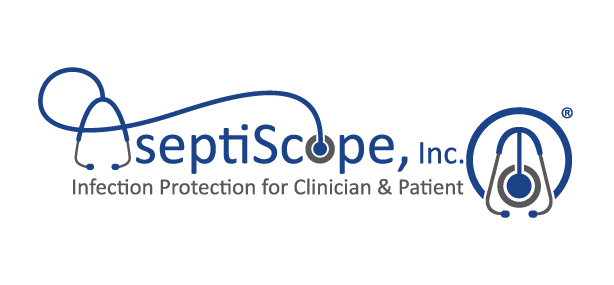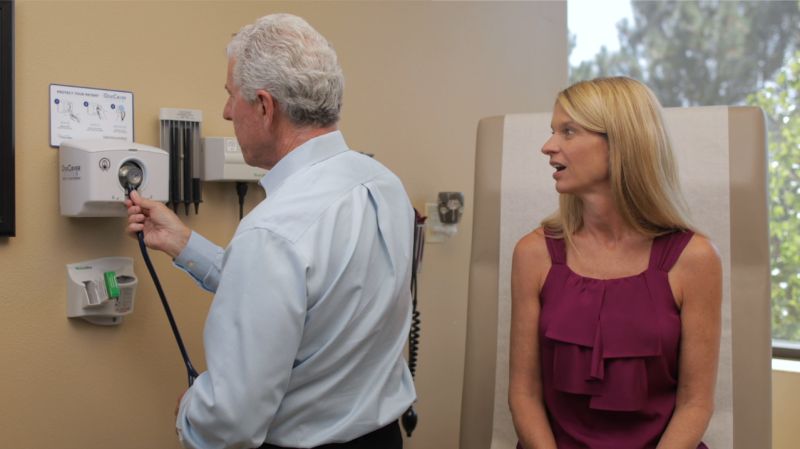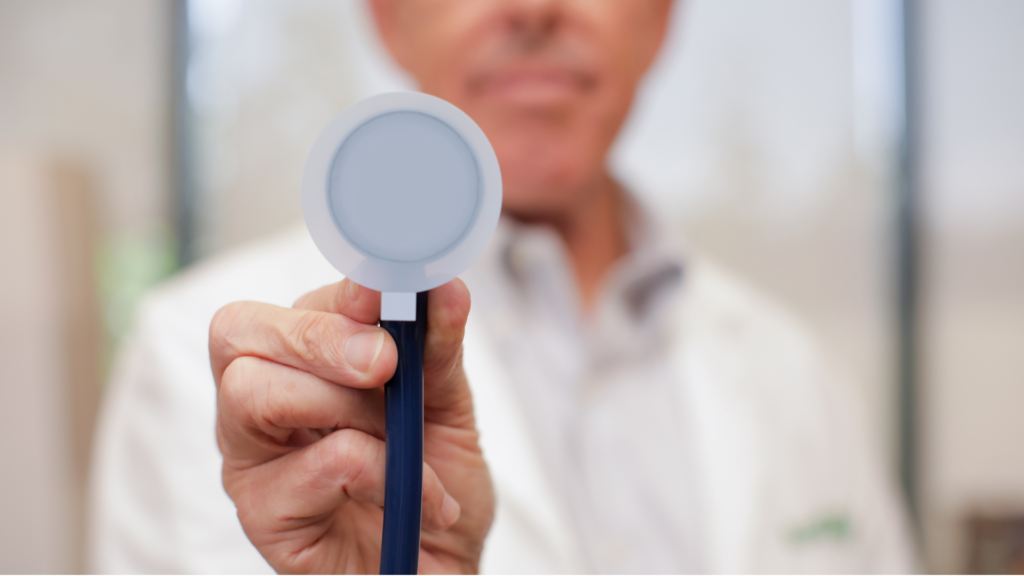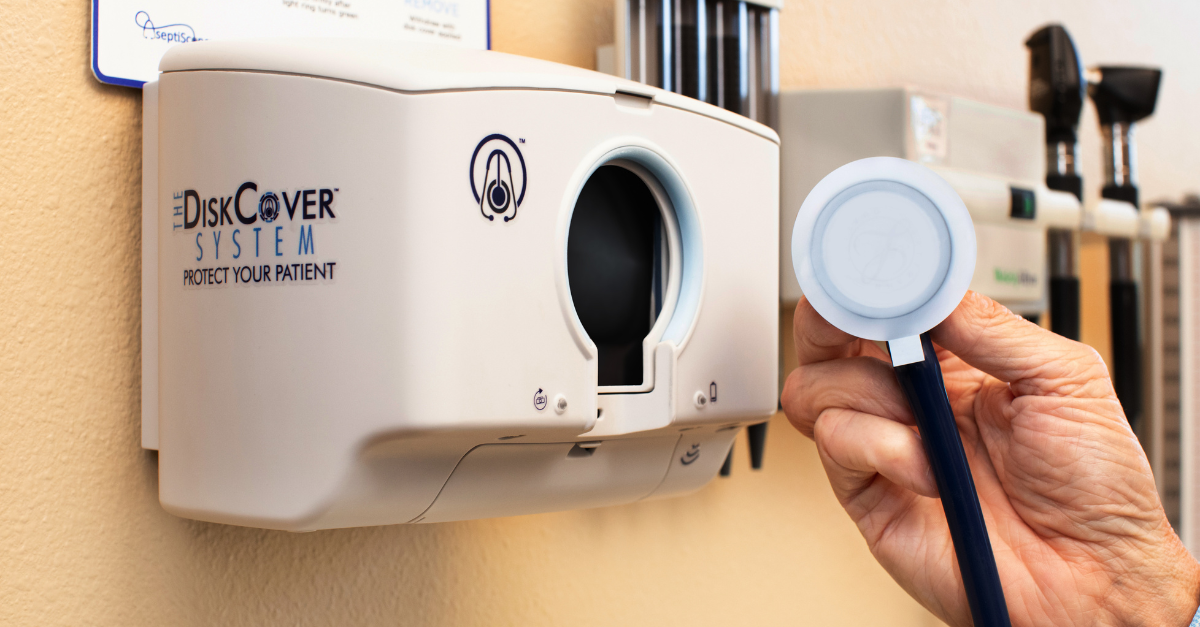Thu, Apr 18, 2024, 12:01 PM PDT
Aseptiscope’s DiskCover® System can help healthcare providers meet the new guidelines from the US CDC, which consider stethoscopes having the same level of risk as unwashed hands.
San Diego, California, April 18, 2024 (GLOBE NEWSWIRE) — AseptiScope®, a California-based, clinical innovation company, has introduced its patented DiskCover® System, a novel technology allowing stethoscopes to avoid direct contact with patients, similar to how gloves are used for clinicians’ hands. This allows clinicians and health facilities to meet the new 2024 guidelines from the US Centers for Disease Control and Prevention (CDC) that elevate concern with stethoscope transmission of pathogens through touch, the foundation of Healthcare Associated Infections (HAI).
The recently released CDC guidelines have reclassified the stethoscope as a major vector for pathogen transmission in healthcare settings, due to its frequent contact with patients, requiring hygiene between each patient, just as the clinician’s hands, which have the same level of contamination as the stethoscope diaphragm (that touches patients). Previously, the stethoscope was classified as a non-critical item, similar to bed railings and countertops, despite stethoscopes touching US patients more than 5 billion times per year.
The DiskCover System uses a wall-mounted, motion-activated dispenser that is loaded with a Clean Cassette®. Each time the clinician wants to apply a cover on their stethoscope, they wave their hand under the dispenser and then place the stethoscope’s diaphragm into a window that applies a disk cover barrier, a totally clean, medical-grade barrier with high-fidelity acoustic performance. Each cassette maintains 420 disk covers in an aseptic (clean) environment until it is applied to a stethoscope. The entire application process takes less than two seconds and does not interrupt the clinician’s workflow.
Now available commercially from AseptiScope’s e-commerce site, the technology is already in use in those hospitals that proactively recognize its value to both healthcare and patients. Naomi Ragsdale, a nurse and infection control expert at the Memphis VA Medical Center,, identified this technology and led its integration into the intensive care setting. “The DiskCover System® has made stethoscope cleanliness uncomplicated and transparent for our ICU. We are able to monitor usage and have peace of mind knowing the compliance of our staff is on par with our hygiene goals which in turn decreases the risk for a hospital-acquired infection”, stated Ragsdale.
“Cancer patients are more susceptible to infection due to their course of treatment, and stethoscope exams are routine in patient assessment,” adds Gerardo Midence, MD, a cancer specialist at St. Joseph Cancer Center in Lewiston, Idaho. St. Joseph is the first to adopt the technology within Lifepoint Health, a national healthcare provider. “We evaluated The DiskCover System and found it to be useful, practical, and functional. Importantly, it makes stethoscope hygiene more reliable and timely.”
“I really see technology playing a huge role in our ability to resolve this challenge,” says Kathleen Vollman, a clinical nurse specialist and president of the World Federation of Critical Care Nurses. “The CDC now recognizes the stethoscope as a significant vector for disease transmission, and we need innovation that will make it easy for busy clinicians to do the right thing. Cleaning stethoscopes with alcohol between patients takes too long, can damage the stethoscope, and is ineffective against alcohol-resistant pathogens.”
AseptiScope CEO Scott Mader says that The DiskCover System is a product of an innovation methodology, called market-driven science. “We develop solutions based on identified clinical needs, and these are designed, vetted, and validated as evidence-based solutions that inherently resonate with providers. Clinicians have not only responded favorably to The DiskCover System, but have stated support for similar solutions for other vectors such as ultrasound probes, and even hands”, says Mader.
Media contact:
Name: Anthony Pham
Email: apham@aseptiscope.com
______________________________________________________________________________
Article from Yahoo! Finance: https://finance.yahoo.com/news/guidelines-elevate-stethoscope-hygiene-requirements-190100981.html?guccounter=1





